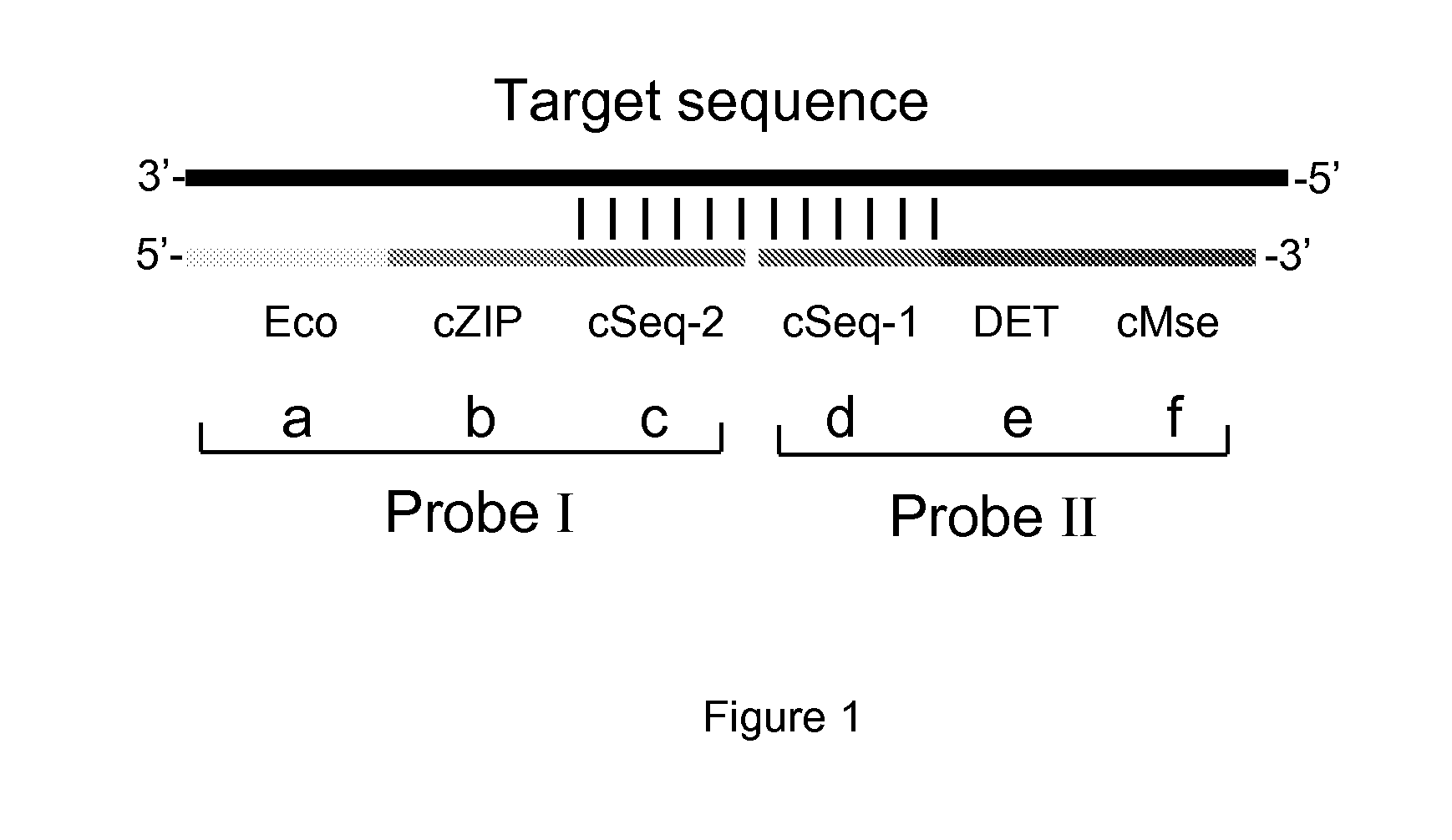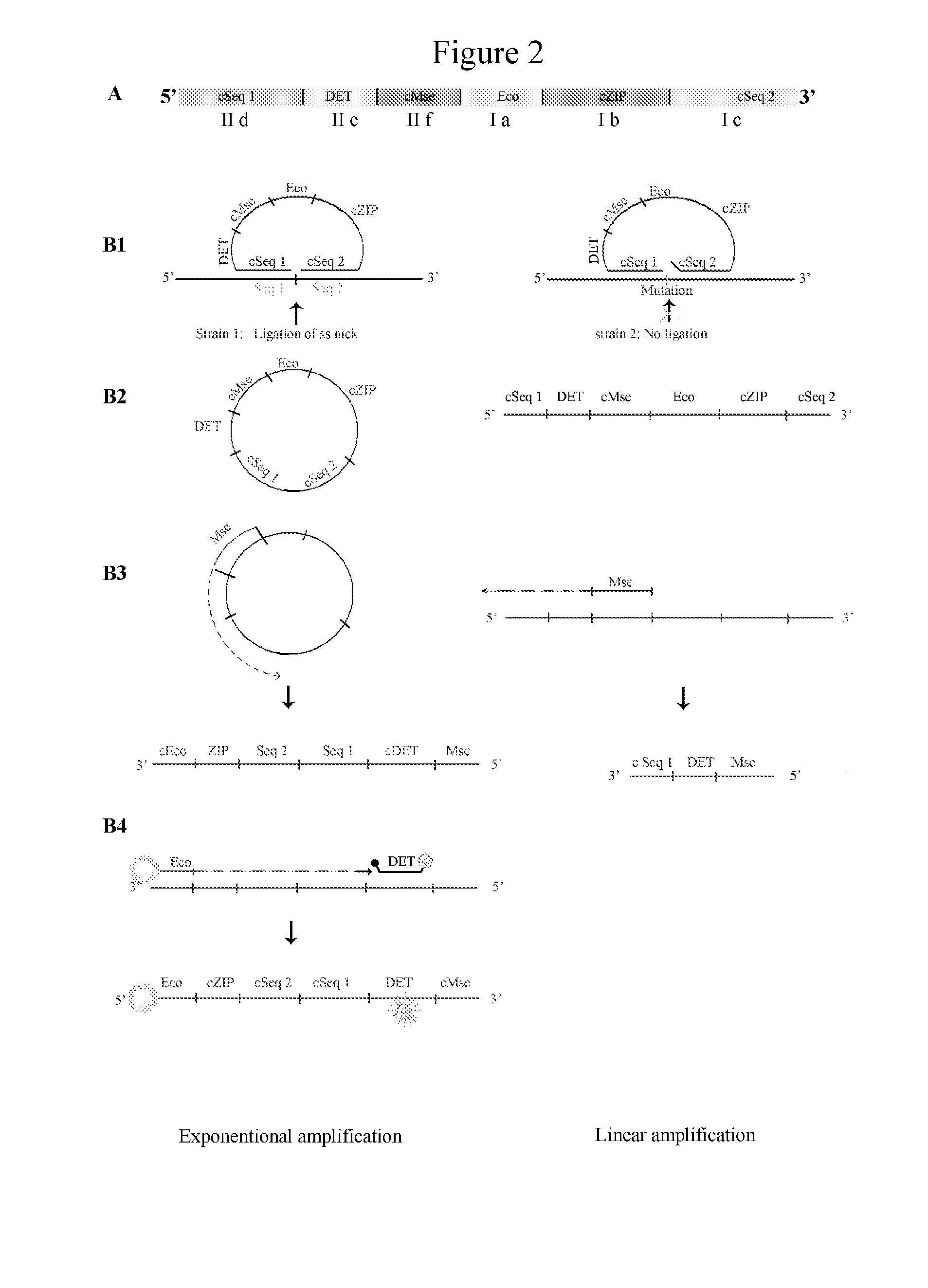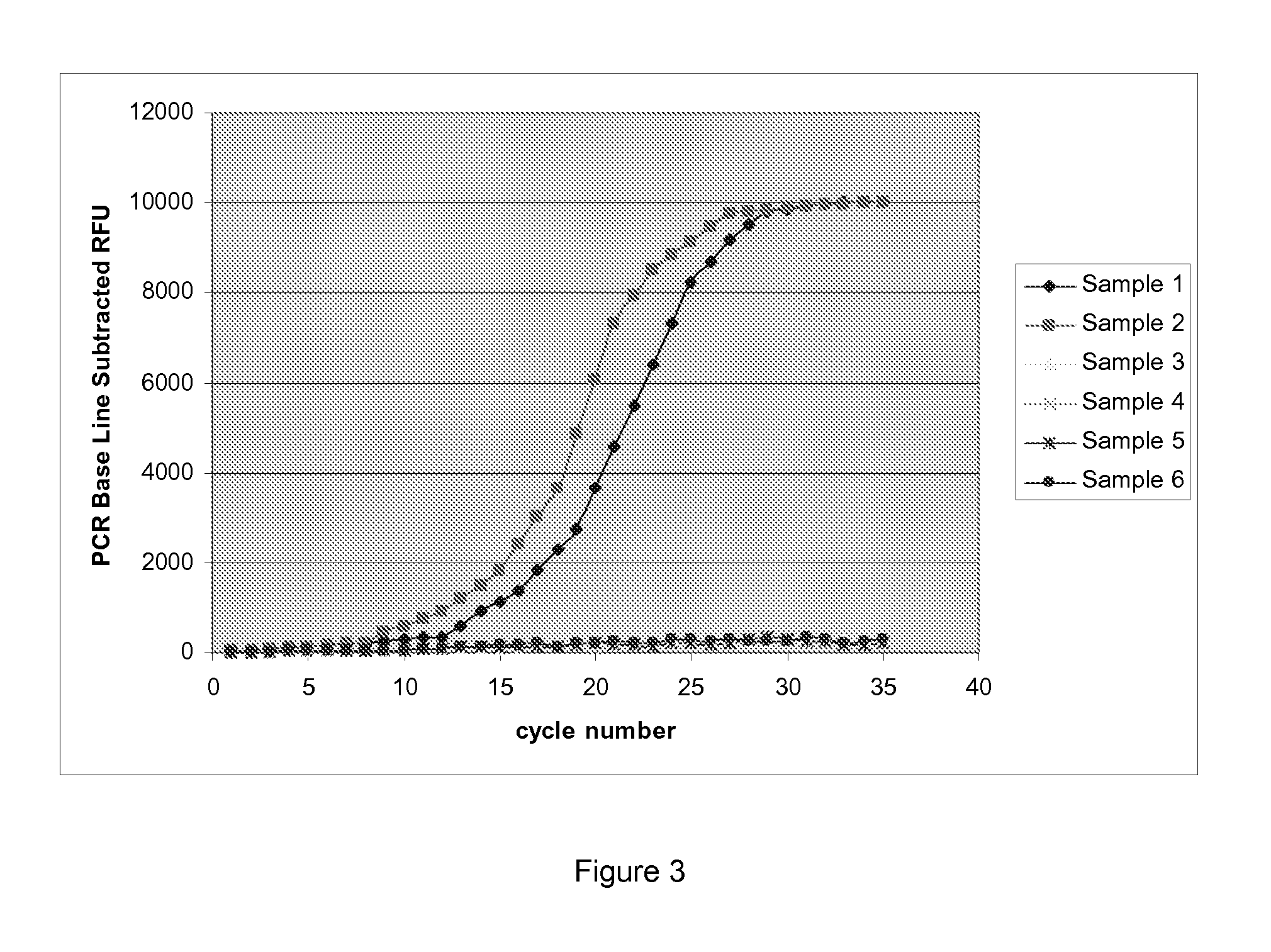Method for fast detection and identification of micro-organisms
a microorganism and detection method technology, applied in the field of fast detection and identification of microorganisms, can solve the problems of laborious, difficult detection of small changes in dna sequences such as snps, and general inability to provide screening methods, and achieve the effect of fast and specific detection
- Summary
- Abstract
- Description
- Claims
- Application Information
AI Technical Summary
Benefits of technology
Problems solved by technology
Method used
Image
Examples
example 1
Design of Real-Time Ligation-Amplification Probes
[0191]Two ligation-amplification probes were used, named “I” and “II”, which have the following design (from 5′-3′), with segments a, b, c, d, e, f, going from the 5′-end to the 3′-end (FIG. 1):[0192]Segment I-a of 20 nucleotides equal to amplification primer 1 (FIG. 1, Eco);[0193]Segment I-b of 24 nucleotides comprising the cZIP-sequence (FIG. 2, cZIP);[0194]Segment I-c of 20-30 nucleotides complementary to the target sequence (FIG. 1, cSeq 2);[0195]Segment II-d of 20-30 nucleotides complementary to the target sequence and located immediately downstream of segment 1-c (FIG. 1, cSeq 1)[0196]Segment II-e of 20 nucleotides comprising the DET-sequence (FIG. 1, DET);[0197]Segment II-f of 20 nucleotides complementary to amplification primer 2 (FIG. 1, cMse);
[0198]The cZIP sequences are as described in WO-2004-106547.
[0199]All probes were ordered at Biolegio B.V. (Nijmegen, The Netherlands).
[0200]Eco and Mse refer to the primer binding regi...
example 2
Description of Bacterial Strains and DNA Isolation
[0201]The following 6 bacterial strains were chosen for real-time LDR
1. Salmonella enterica ssp. enterica serovar Virchow
2. Salmonella enterica ssp. enterica serovar Paratyphi B var Java
3. Escherichia coli
5. Shigella flexneri
6. Campylobacter jejuni
[0202]Pure cultures were inoculated into nutrient broth and grown o / n at 37° C. 100 μl of this o / n culture was used for DNA isolation using the Qiagen genomic DNA isolation kit according to the procedures advised by the manufacturer (Qiagen, Venlo, The Netherlands).
example 3
Real-Time Ligase Detection Reactions (FIG. 2)
[0203]The amplification primers have the following sequence:
Primer 1 (Eco): 5′-biotin-GTAGACTGCGTACCAATTC-3′Primer 2 (Mse): 5′-GACGATGAGTCCTGAGTAA-3′
[0204]The primers were ordered at Biolegio B.V. (Nijmegen, The Netherlands); Biotin is covalently attached to the 5′ end of primer 1, and was used to detect the amplification products on the microarray.
[0205]The ligation reactions were carried out in a volume of 10 μl containing:[0206]1.0 fMol of each real-time ligation-amplification probe oligonucleotide[0207]0.5 ng of target-DNA of the organisms to be analyzed[0208]1 unit Taq DNA ligase (New England Biolabs, Beverly, Mass., U.S.A.)[0209]1.0 μl 10× Taq DNA ligase buffer (New England Biolabs, Beverly, Mass., U.S.A.)[0210]sterile water to an end volume of 10 μl.
[0211]23 real-time ligation-amplification probes were used based on the PremiTest Salmonella probes (DSM PremiTest, Geleen, The Netherlands; Wattiau et al., Int. J. Food Microbiol., 123...
PUM
| Property | Measurement | Unit |
|---|---|---|
| Fraction | aaaaa | aaaaa |
| Fraction | aaaaa | aaaaa |
| Chemical shift | aaaaa | aaaaa |
Abstract
Description
Claims
Application Information
 Login to View More
Login to View More - R&D
- Intellectual Property
- Life Sciences
- Materials
- Tech Scout
- Unparalleled Data Quality
- Higher Quality Content
- 60% Fewer Hallucinations
Browse by: Latest US Patents, China's latest patents, Technical Efficacy Thesaurus, Application Domain, Technology Topic, Popular Technical Reports.
© 2025 PatSnap. All rights reserved.Legal|Privacy policy|Modern Slavery Act Transparency Statement|Sitemap|About US| Contact US: help@patsnap.com



